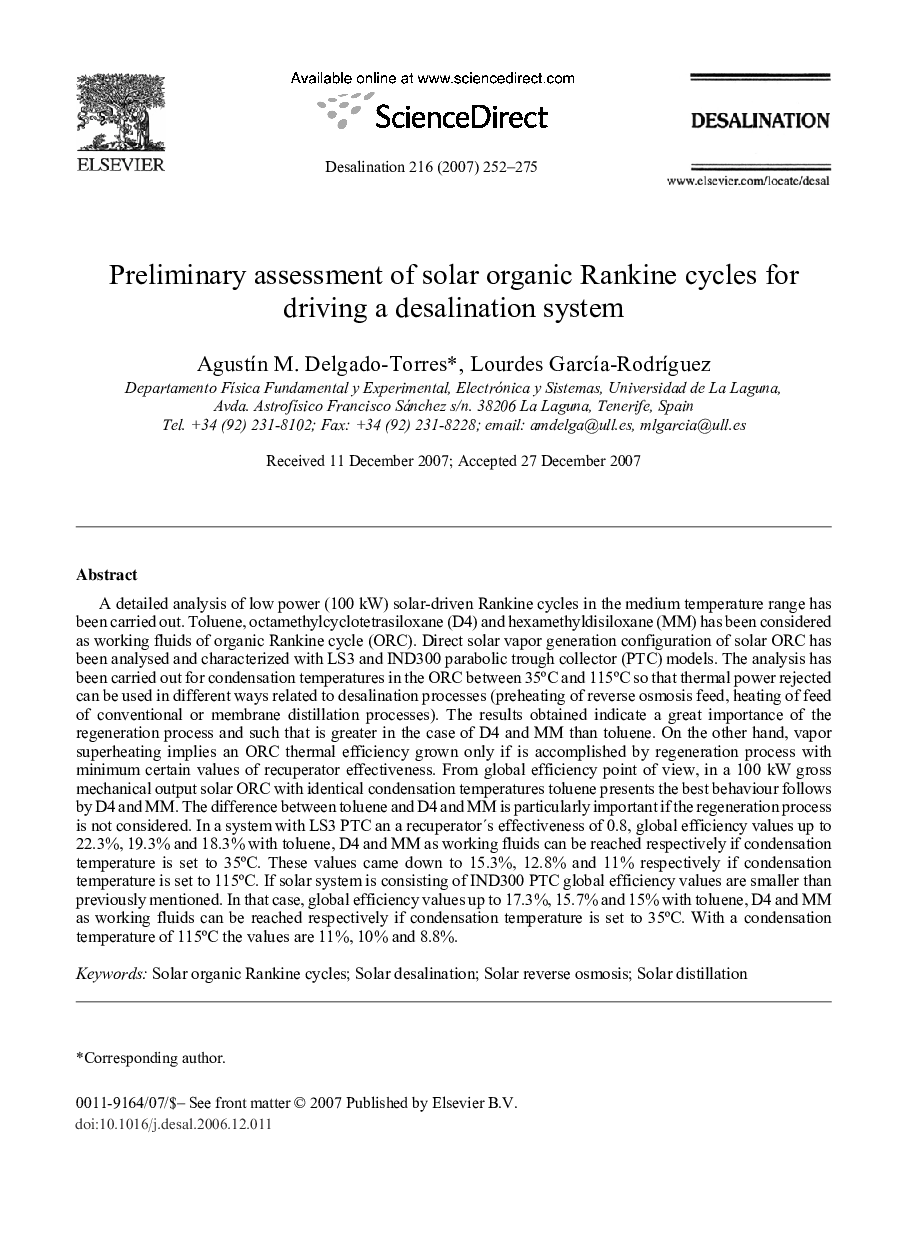| Article ID | Journal | Published Year | Pages | File Type |
|---|---|---|---|---|
| 627854 | Desalination | 2007 | 24 Pages |
Abstract
A detailed analysis of low power (100 kW) solar-driven Rankine cycles in the medium temperature range has been carried out. Toluene, octamethylcyclotetrasiloxane (D4) and hexamethyldisiloxane (MM) has been considered as working fluids of organic Rankine cycle (ORC). Direct solar vapor generation configuration of solar ORC has been analysed and characterized with LS3 and IND300 parabolic trough collector (PTC) models. The analysis has been carried out for condensation temperatures in the ORC between 35ºC and 115ºC so that thermal power rejected can be used in different ways related to desalination processes (preheating of reverse osmosis feed, heating of feed of conventional or membrane distillation processes). The results obtained indicate a great importance of the regeneration process and such that is greater in the case of D4 and MM than toluene. On the other hand, vapor superheating implies an ORC thermal efficiency grown only if is accomplished by regeneration process with minimum certain values of recuperator effectiveness. From global efficiency point of view, in a 100 kW gross mechanical output solar ORC with identical condensation temperatures toluene presents the best behaviour follows by D4 and MM. The difference between toluene and D4 and MM is particularly important if the regeneration process is not considered. In a system with LS3 PTC an a recuperator´s effectiveness of 0.8, global efficiency values up to 22.3%, 19.3% and 18.3% with toluene, D4 and MM as working fluids can be reached respectively if condensation temperature is set to 35ºC. These values came down to 15.3%, 12.8% and 11% respectively if condensation temperature is set to 115ºC. If solar system is consisting of IND300 PTC global efficiency values are smaller than previously mentioned. In that case, global efficiency values up to 17.3%, 15.7% and 15% with toluene, D4 and MM as working fluids can be reached respectively if condensation temperature is set to 35ºC. With a condensation temperature of 115ºC the values are 11%, 10% and 8.8%.
Keywords
Related Topics
Physical Sciences and Engineering
Chemical Engineering
Filtration and Separation
Authors
AgustÃn M. Delgado-Torres, Lourdes GarcÃa-RodrÃguez,
